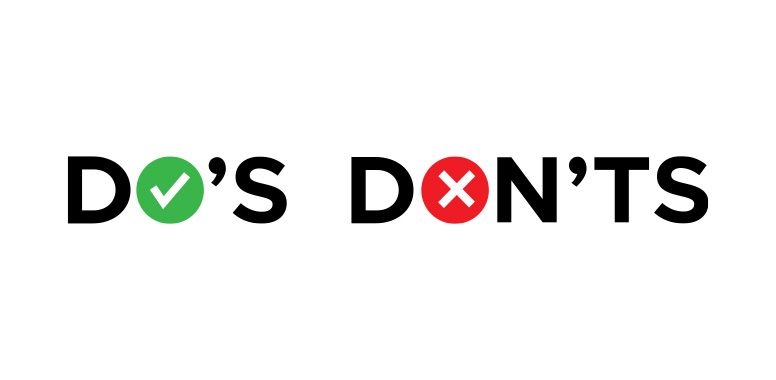Don't Let These Product Listing Mistakes Ruin Your Sales
Creating effective product listings is crucial for running a successful e-commerce business. The quality and accuracy of your product listings can significantly impact your sales, customer satisfaction, and overall brand reputation. However, even small mistakes can lead to lost sales, account suspensions, and long-term damage to your brand's credibility. Clear, accurate, and compelling product listings are not just best practices; they are essential in the competitive world of online retail.
In this article, we'll explore the most common mistakes e-commerce sellers make with their product listings and how these errors can hurt your business. We'll provide detailed tips on how to avoid these pitfalls, covering everything from inaccurate product descriptions and poor-quality images to incorrect pricing and overlooked shipping details. By understanding and addressing these issues, you can create more effective product listings that attract customers, enhance their shopping experience, and ultimately boost your e-commerce success.
Product Titles That Include Promotions
Why It’s a Mistake
Including promotions like sales or coupons in your product titles might seem like a clever way to attract buyers. It gives the impression of a great deal and can catch a shopper's eye. However, this practice is strictly forbidden on platforms like Amazon. If your product title includes promotions, your listing could be rejected or even removed altogether.
How to Avoid It
Focus on Clarity: Make sure your product titles are clear and to the point. They should accurately describe what the product is without any confusion. Think about what your customers are looking for and use language that they would easily understand. For example, instead of "Amazing Gadget for Sale!" go with "Wireless Bluetooth Headphones - Noise Cancelling, Black."
Use Promotional Fields: If you want to highlight promotions, such as sales or discounts, use the specific fields or sections provided by the platform. Most e-commerce platforms have designated areas for promotional information. This keeps your titles clean and ensures you’re following the platform’s rules. For instance, use the ‘discount’ or ‘special offer’ sections to catch your customers' attention without cluttering your product titles.
Tools for Management: Take advantage of tools designed to help manage your product listings efficiently. These tools can help you enhance your listings while staying compliant with platform rules. They streamline the process, making it easier to keep your listings informative and attractive to potential buyers.
Using Bad Images
Why It’s a Mistake
A product's picture is often the first thing a customer notices when browsing online. It plays a crucial role in making a good first impression and can significantly influence a potential buyer's decision. If your photos aren't up to par, they can turn off potential buyers and negatively impact your sales.
How to Avoid It
Invest in Professional Photography: Consider hiring a professional product photographer or graphic designer to take your product photos. Professionals have the experience and equipment to capture your products in the best light, literally and figuratively. They know how to highlight the key features of your product, making it look as appealing as possible to potential buyers.
Adhere to Image Guidelines: Make sure to follow the specific image guidelines provided by the platform you are using. Each platform has its own requirements for image resolution, background, and format. Adhering to these guidelines ensures that your photos display correctly and look professional. For example, many Amazon prefer white backgrounds because they make the product stand out and look clean and professional.
Use High-Quality Equipment: If you decide to take the photos yourself, it's essential to use high-quality equipment. Invest in a good camera that can capture sharp, detailed images. Proper lighting is also crucial; use natural light or invest in a lighting kit to avoid shadows and ensure your product is well-lit. A tripod can help keep your camera steady and your shots consistent. Taking the time to set up a mini studio can make a big difference in the quality of your photos, even if you're not a professional photographer.
Listing the Wrong Product Quantity
Why It’s a Mistake
Incorrect product numbers can lead to significant problems for your business, including missed sales opportunities and overselling, both of which are penalized by many marketplaces. If you overestimate your stock levels, you risk overselling, which means selling more items than you actually have in inventory. This can lead to unhappy customers who might have to wait longer for their orders or, worse, receive cancellations. Such issues not only damage your reputation but could also result in account suspensions from the marketplace.
How to Avoid It
Real-Time Inventory Management: Invest in real-time inventory management tools to keep track of your stock levels accurately. These tools can provide up-to-the-minute updates on your inventory, helping you avoid the common pitfalls of overstocking or running out of products. With real-time data, you can make informed decisions about restocking and manage your supply chain more efficiently, ensuring that you always have the right amount of stock on hand.
Automation Tools: Utilize automation tools that can automatically update your stock levels on various platforms, reducing the risk of human error and saving you time. By automating inventory updates, you can maintain consistency and accuracy, ensuring that your product availability is correctly reflected everywhere you sell.
Regular Audits: Conduct regular stock audits to verify the accuracy of your inventory data. Regular physical counts of your inventory can help you identify discrepancies between your recorded stock levels and the actual quantities on hand. This practice not only helps maintain accurate inventory records but also highlights any issues in your inventory management processes that need to be addressed.
Following General SEO Practices
Why It’s a Mistake
Compared to other search engines, Amazon's search engine optimization (SEO) procedures are rather different. Even while Google places a high priority on term repetition, it can have a detrimental influence on listings on Amazon. The overuse of keywords can give the impression that the listings are spam and diminish the usefulness of the site.
How to Avoid It
Amazon-Specific SEO: When optimizing your product listings for Amazon, it's essential to focus on Amazon’s unique SEO practices. Amazon prioritizes relevance over repetition, meaning that simply stuffing your listings with keywords won't help. Instead, it's about using the right keywords in the right places to make your listings as relevant as possible to potential buyers' searches.
Keyword Placement: Strategically place your keywords in crucial areas of your product listing, such as the title, product descriptions, bullet points, and backend search terms. For example, if you are selling a "Bluetooth Speaker," make sure those words appear naturally in the title and description, but also think about related terms like "wireless speaker," "portable speaker," or specific features that customers might be searching for. This helps Amazon’s algorithm understand exactly what you’re selling and match your product to relevant customer searches.
Avoid Redundancy: While it's important to include keywords, avoid the temptation to repeat them unnecessarily. Overloading your listing with the same keyword can make it look spammy and unprofessional. For Amazon’s SEO, using a keyword once in each key section of your listing is sufficient. This ensures your listing remains clear and readable while still being optimized for search. By keeping your keyword usage concise and relevant, you improve the chances of your product being found by the right customers.
Prevention Strategies for Amazon Listing Errors
Make Use of Automation Tools: Automation tools help streamline the creation and management of your listings. These tools help ensure that your product information is accurate and consistent across all your listings, reducing the likelihood of manual errors.
Stay Updated with Amazon’s Policies: Regularly review Amazon's rules and guidelines to make sure you are on top of things. Staying updated helps prevent mistakes that could lead to listing errors or account suspensions.
Implement Quality Control Measures: Establish quality control processes within your organization to review and verify product details before they go live on Amazon. This helps catch any errors or inconsistencies early.
Double-Check Product Details: Take the extra time to double-check all product information, including titles, descriptions, bullet points, and images, before posting or updating a listing. This thorough review helps catch any overlooked mistakes.
By understanding and addressing common mistakes—such as including promotions in titles, using poor-quality images, listing incorrect product quantities, and not optimizing for Amazon-specific SEO—you can create more effective product listings. Remember to leverage automation tools, stay updated with Amazon's policies, implement quality control measures, and double-check all product details.
Taking these steps will help you avoid pitfalls, attract more customers, enhance their shopping experience, and ultimately boost your e-commerce success. Don't let preventable listing mistakes ruin your sales. Invest the time and effort into perfecting your product listings and watch your business thrive.


